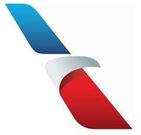Last month American Airlines, Inc. successfully landed its turbulent pursuit to register its “Flight Symbol” logo with the Copyright Office, after the Copyright Office Review Board (CORB) electively revisited and reversed its initial decision refusing registration of the logo for lacking sufficient creativity. Ultimately agreeing with American Airlines, the CORB found that the logo modifies and combines otherwise simple shapes and shading in a way that provides for the minimum amount of creativity necessary to satisfy the originality requirement for formal copyright registration.
American Airlines’ battle emphasizes the important role logos play in any brand strategy – more so than other forms of marks, logos are easily recognizable, and are a shorthand way of differentiating and communicating brand value in the marketplace. When a logo is sufficiently creative, applying for a copyright registration can provide an added level of intellectual property protection for relatively little cost. Presumably for that reason, American Airlines applied for a copyright registration for the Flight Symbol in 2016, despite already owning a U.S. trademark registration for the same logo.

American Airlines’ unwavering efforts to register its logo with the Copyright Office—including filing a lawsuit against the Copyright Office for refusing to register the logo—provide considerable insight for brand owners seeking how best to protect two-dimensional designs.
Pre-filing considerations. Because commercial use is a prerequisite to obtaining a federal trademark registration in the U.S., and each class of good/service intended to be covered by a trademark registration requires a separate fee, most brand owners necessarily seek registration covering only their primary goods and services offerings, versus a full line of ancillary promotional products.
However, obtaining a copyright registration can be a cost-effective way for a brand owner to extend the scope of its rights in a two-dimensional design to secondary goods and services, and in different geographic markets, for several reasons.
First, commercial use of a two-dimensional design is not a prerequisite to obtain a copyright registration; instead, all that is required is that the design be fixed in a tangible medium (e.g., created on a computer of drawn on paper) and original.
Second, the copyright application fee ($55) is significantly less than the per class trademark application fee ($225 – $400, depending on the application form), and copyright applications are typically processed more quickly than trademark applications.
Finally and significantly, a copyright registration for a two-dimensional design may be enforceable against substantially similar copies, regardless of whether such copies are used with goods/services related to the copyright owner’s business. In other words, unlike in a determination of trademark infringement, the underlying goods/services are not considered when determining copyright infringement. Additionally, a U.S. copyright registration can serve as a basis for a DMCA takedown request for products sold on online platforms, and may be a useful enforcement tool in Berne Convention member countries, like China.
Thus, brand owners may want to consider seeking registration of two-dimensional design logos with both the Trademark Office and the Copyright Office.
Filing considerations. Before a copyright application can be processed, a “deposit,” a representation of the work, must be submitted. For two-dimensional works, deposits are typically photographs or digital images of the work, and may be submitted electronically as an electronic file or mailed in as a hard copy.
The Copyright Office’s online registration portal makes it easy to submit deposits electronically, but some degradation of image quality might occur. Such was the (alleged) case with respect to the electronic deposits provided for the Flight Symbol; as the CORB’s supplemental decision explained, it was difficult to appreciate features of the design in the electronic deposit versions, that were easier to discern in the subsequently-submitted paper deposits. According to the CORB, the physical deposits of the Flight Symbol “depicted additional details that had not been clear from the original [electronic] deposits,” and these details supported the CORB’s finding that the Flight Symbol is sufficiently creative for copyright protection. For nuanced images, applicants should consider submitting physical deposit copies to the Copyright Office by mail or in-person submission.
Prosecution considerations. If, during examination, the Copyright Office refuses registration of a work for lacking sufficient originality because, for example, the design is arguably simple, or comprises relatively few elements, it is important that the response to the refusal avoid likening those elements to geometric shapes, and instead highlight other features of the work, like shading and arrangement, that significantly distinguishes those elements from common regular shapes. Discussing these visually objective indicia may be more persuasive than how the work is intended to be received by the public (i.e., the work’s symbolic meaning), how it is in fact received (i.e., its commercial value), or the time and effort put into creating the work.
Armed with these considerations, brand owners can be better equipped to assess whether their logos may be good candidates for copyright registration.
This article appeared in the January 2019 issue of MarkIt to Market. To view our past issues, as well as other firm newsletters, please click here.

Receive insights from the most respected practitioners of IP law, straight to your inbox.
Subscribe for Updates